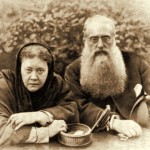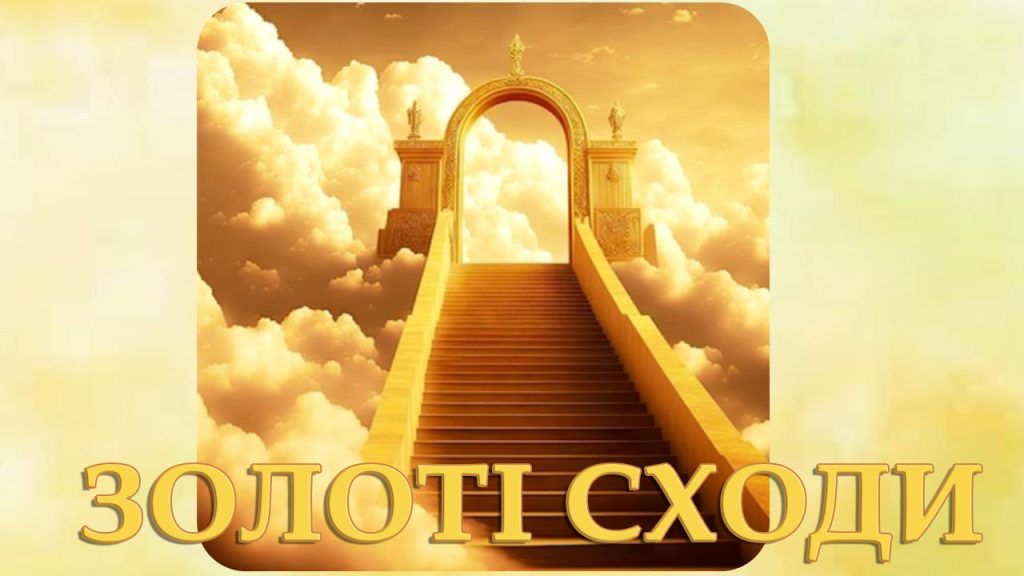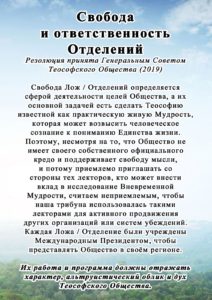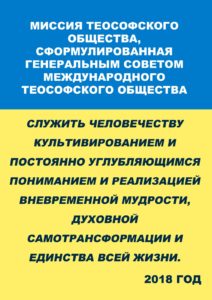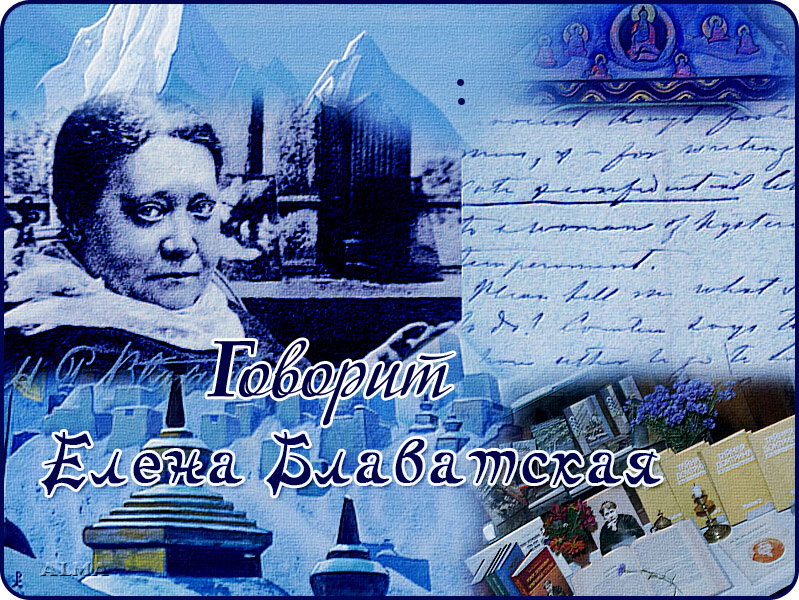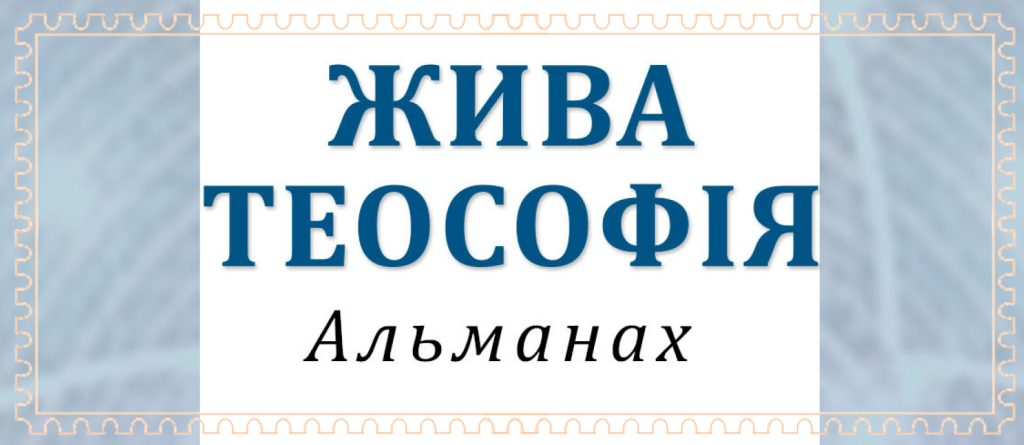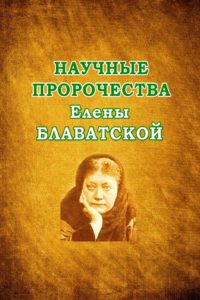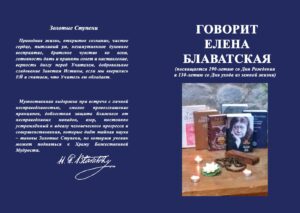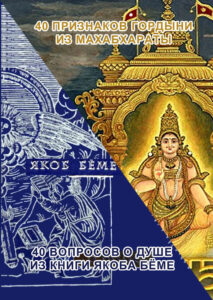
Девід П. Брюс працював національним секретарем TТ в Америці з 2010 по 2023 рік, а також директором з освіти з 2003 по 2010 рік. Він є автором книги «Служіння вищій меті», опублікованої видавництвом Quest Books.
Голос Безмовності (ГБ) не схожий на інші літературні твори О. П. Блаватської (ОПБ). Враховуючи його об’ємний доробок, це твердження заслуговує на увагу. Ті, хто не знайомий з цією маленькою, але надихаючою книжкою, можуть запитати: «Чому вона така особлива? Чому це так шанується в серцях теософів?» За своїм розміром і масштабом вона навіть не наближається до «Розкритої Ісіди» чи «Таємної Доктрини» (ТД). З точки зору подання викладу теософських вчень, вона не зрівняється з «Ключем до теософії». Незважаючи на ці відмінності, багато хто вважає її безцінним коштовним каменем.
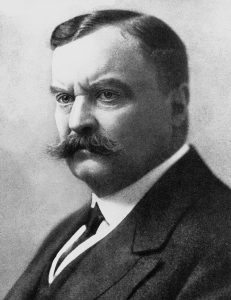 У той же час, дещо збентежує те, що ГБ було представлено в наших журналах набагато менш помітно, ніж більші праці Блаватської. Наприклад, протягом вісімдесяти семи років видання Canadian Theosophist було представлено 213 статей на ТД, але лише вісім на Голос. Протягом шістидесяти трьох років існування American Theosophist було опубліковано сімдесят дев’ять статей на ТД, але лише чотири на Голос. Журнал Theosophist з Адьяра мав більш респектабельне співвідношення. За 142 роки воно опублікувало 135 статей на ТД і 56 на «Голос».
У той же час, дещо збентежує те, що ГБ було представлено в наших журналах набагато менш помітно, ніж більші праці Блаватської. Наприклад, протягом вісімдесяти семи років видання Canadian Theosophist було представлено 213 статей на ТД, але лише вісім на Голос. Протягом шістидесяти трьох років існування American Theosophist було опубліковано сімдесят дев’ять статей на ТД, але лише чотири на Голос. Журнал Theosophist з Адьяра мав більш респектабельне співвідношення. За 142 роки воно опублікувало 135 статей на ТД і 56 на «Голос».
Ми знову повертаємося до питання: «Чим пояснюється висока повага, яку теософи надають цій, здавалося б, забутій книзі?»
Для тих, хто знайшов час, щоб ознайомитися з її 316 віршами, відповідь очевидна: це вишукана краса мови, яка в ній використовується.1
Нехай жахливе сонце не висушить жодної сльози болю, перш ніж ти сам витреш її з ока страждаючого. (60)
Не гнівайся ні на карму, ні на незмінні закони природи. Але борися тільки з особистим, минущим, швидкоплинним і тлінним. (65)
Ми зазвичай не думаємо про ОПБ, як про поета, але не може бути сумніву, що ГБ рясніє чудовими поетичними образами. Вона розкриває художню сторону, якої немає в інших її творах, чутливість до нюансів і делікатних відтінків значення, яких немає в її палкій полеміці. Перегортайте практично будь-яку сторінку, і ви знайдете вірш за віршем, уривок за уривком, що дорівнює за естетичною красою всьому, що було написано Шеллі, Вордсвортом чи Вітменом. Це сміливе твердження, але наведені в цій статті приклади підтвердять його.
Дослідники поезії знають, що вона містить ключові елементи, що відрізняють її від прози. У цій статті наведено кілька з них і наведено приклади: по-перше, з віршами відомих поетів; по-друге, з віршами, взятими з Голосу. Потім читач може порівняти, як поезія ОПБ протиставляється поезії великих поетів нашої епохи. Це не означає, що «Голос» — це поема. Це не так. Правильніше було б охарактеризувати його як прозу-поему, гібридну форму, що містить елементи поезії та прози. Англійський поет Персі Біш Шеллі у своєму есе «Захист поезії» пояснив: «Частини твору можуть бути поетичними, але композиція в цілому не є віршем».
Звичайно, не всі є шанувальниками поезії, але для тих, хто намагається жити життям, керуючись вищими істинами, не слід скидати з рахунків цінування поезії. Поезія відкриває вікно в особливий жанр краси, який промовляє безпосередньо до серця. Безперечно, «Голос» — це книга, яка приваблює серце. Ми можемо згадати часто цитований рядок із «Оди Шеллі до грецької урни»: «Краса — це правда, правда — краса». Вищі істини, які теософи намагаються зрозуміти і жити за ними, неможливо адекватно описати прозаїчною, простою мовою. Поезія, метафора та символіка набагато краще підходять для цієї мети, тому що вони радше натякають, ніж проголошують, навіюють, а не сповіщають, інтимують, а не диктують, таким чином підносячи та оживляючи вищу уяву до тонших сфер думки. Американський поет Воллес Стівенс інтуїтивно розумів це коли казав: «Поет — священник невидимого».
У «Йозі краси», невеликій брошурі, опублікованій у 1969 році, англійський теософ Лоуренс Бендіт зазначив:
Класичні грецькі філософи говорили про триєдність Добра, Істини та Прекрасного, надаючи всім трьом подібне значення в житті людини. У сучасному теософському русі ми приділяли багато уваги першим двом із них, дуже нехтуючи третім.
Подібним чином у статті Theosophist 1936 року (том 57, червневий номер) під назвою «Почуття краси» танцівниця Рукміні Деві сказала:
Ми повинні з нетерпінням реагувати на те, що є прекрасним, на справжню вишуканість. … Ми не повинні йти на компроміс у тому, що є потворним або позбавленим культури.
Наскільки важлива ця звістка в сучасному світі, де потворність і посередність здаються всюдисущими, де грубість мови та манери панують у всіх ешелонах суспільства!
Заглиблюючись у дослідження літературних і риторичних прийомів, що використовуються поетами, варто розглянути уривок із листа, написаного в 1914 році американським поетом Робертом Фростом:
Вухо – єдиний справжній письменник і єдиний справжній читач.
Він вважає, що поезію найкраще оцінюють, коли її слухають. Ми слухаємо музику вухами, але це зовсім інший досвід, ніж читання нотного рукопису очима. Фрост продовжує:
Я знаю людей, які читали, не чуючи звуків речення, і вони були найшвидшими читачами. Ми їх називаємо читачами очей. Вони розуміють значення поглядом. Але вони погані читачі, тому що пропускають найкращу частину того, що хороший письменник вкладає у свою роботу.
Ми повинні мати це на увазі під час вивчення ГБ. Не читайте очима! Натомість спробуйте прочитати уривки вголос і відчуйте різницю.
Давайте тепер розглянемо деякі з поширених прийомів, використовуваних поетами, прийомів, які О.П.Б. так майстерно використала в цій чудовій книзі.
Алітерація
Алітерація — повторення початкових приголосних звуків у двох або кількох сусідніх словах. Ось приклад із вірша Роберта Герріка «Аргумент його книги».
Я співаю про струмки, про цвіт, про птахів і альтанки,
квітневі, травневі, червневі та липневі квіти.
Повторення «b» у першому рядку очевидно, але не забувайте про повторення «j» у другому рядку. Без алітерації перший рядок може бути таким: «Я співаю про струмки, про квіти, птахів і сади». Сенс, по суті, той самий, але чарівність зникла.
Іноді Блаватська використовує алітерацію в невеликих групах слів: «Беззвучний звук» (2), «Тихий оратор» (11), «голос чесноти» (69), «Лев Закону» (134), «страшний Даг-Дугпа» (227). Це додає рядкам ритмічність. Ще один цікавий момент полягає в тому, що назва «беззвучний звук» і «безшумний динамік» також парадоксальні за своєю природою.
Скільки випадків алітерації ви можете почути у вірші 122 Голосу? Але якщо ти розімнеш лушпиння з росою Майї, ти зможеш створити лише їжу для чорних голубів смерті, птахів народження, тліну та смутку.
Асонанс
Цей термін стосується тісного зіставлення схожих звуків, що містять однакові голосні, але з різними приголосними, як от «промінь» і «зелений» або «чорний» і «капелюх». Асонанс додає лініям елемент гармонії та солодкості.
Звуки асонансу нестриманно співають у вірші Джерарда Менлі Гопкінса «God’s Grandeur»:
Світ сповнений величі Бога.
Воно спалахне, як блиск від потрясної фольги; Він збирається до величі, як сік роздавленої олії. Чому ж тоді люди не перекидають свою палицю? Покоління ступали, ступали, ступали; І все обпалене торгівлею; вицвілий, вимазаний мукою;
І носить плями людини, і ділиться запахом людини: ґрунтом
Зараз босий ноги не відчуває, бо взутий.
Звертаючись до Голосу, зверніть увагу на асонанс у цих коротких рядках: «Ось сонм душ» (36) і «Якби ти хотів пожинати солодкий мир». (139). Скільки випадків цього ви можете знайти у вірші 99?
Ось! ти став світлом, ти став звуком, ти твій Учитель і твій Бог. Ти сам є об’єктом твого пошуку: Голос непорушний, що звучить у вічності, вільний від змін, вільний від гріха, сім звуків в одному.
Співзвуччя
Співзвучність — це повторення приголосних звуків, які можуть з’являтися в середині або в кінці слова. У цих рядках із вірша Роберта Фроста «Назовні, назовні» ми знаходимо як співзвуччя, так і алітерацію:
Дзижчача пила гарчала й стукотіла на подвір’ї, і пилила, і скидала дров’яні дров’янки, Запашні, коли вітерець гуляв.
Фрост використовує алітерацію з літерами «s» і «d» і співзвуччя з літерою «t». Зверніть також увагу на цікавий ефект форзаца з літерою «z», яка з’являється в словах «buzz» (перший рядок) і «breeze» (останній рядок).
Скільки випадків співзвуччя ви можете визначити в цих рядках із Голосу?
Коли він перестає чути багато, він може розрізнити ОДИН — внутрішній звук, який вбиває зовнішнє. (7)
Розум потребує широти й глибини. (114)
Тоді ти, боязке серце, будь своєчасно обережний; залишайся задоволеним Доктриною Ока. (147)
Озброєний ключем милосердя, любові та ніжності, ти безпечний перед воротами Дана. (230)
Ти, напевно, впорався з усіма психічними змінами в собі й убив армію думок, які, витончені й підступні, непомітно повзуть у світлу святиню Душі. (242)
Для експерименту давайте приберемо співзвуччя з вірша 114, зберігаючи значення: «Розум потребує простору та глибини». Без співзвуччя пам’ятний вірш стає звичайним і таким, що забувається.
Алітерацію, асонанс і консонанс можна описати як звуки слів. У поезії є ще одна категорія, яку ми можемо назвати ритмічними звуками.
Анафора
Анафора — це риторичний прийом, у якому слово або вираз на початку послідовних статей, фраз чи речень повторюється для наголосу або додавання ритмічного елемента nt. Він зустрічається в поезії, прозі, політичних промовах і текстах популярної музики:
Не питайте, що ваша країна може зробити для вас — запитайте, що ви можете зробити для своєї країни.
— Джон Ф. Кеннеді
Я прийшов, я побачив, я переміг. — Юлій Цезар (у листі до римського сенату).
Бо, або він переможе, або впаде. — ГБ (174)
Коли до світової метушні …, коли до ревового голосу …, коли злякався від виду …, коли оглухнути від криків … — ГБ (15)
Хіба ти не проходив повз …? Хіба ти не переміг …? Чи ти не згрішив … зруйновано …? Ти не ввійшов …? — ГБ (94–7)
Хто до них підійде? Хто перший увійде до них? Хто перший почує науку …? — ГБ (104–6)
Так само, як більшу частину чарівності поезії можна віднести до вмілого використання звуків слів і ритму слів, візуальну магію поезії можна віднести до яскравих поетичних образів, створених образною мовою. Давайте розглянемо кілька прикладів.
Синекдоха — це фігура мови, у якій слово або фраза, що вказує на частину чогось, використовується для представлення цілого. Ось кілька прикладів:
Відведи своє обличчя звідси. — Макбет, дія 4, сцена 3
Моє неспокійне серце мандрувало по всьому світу. — Румі
Хоча ти можеш блукати кращими землями,
Ти не скоро забудеш мої руки. — Дороті Паркер, «Але не забута»
Колесо Доброго Закону рухається стрімко на … Рука карми веде колесо. — ГБ (121)
Якщо тобі це сказали, щоб отримати звільнення, ти мусиш ненавидіти свою матір … скажи їм, що їхній язик брехливий. — ГБ (124)
Гіпербола — екстравагантна мова що представляє щось, як більше або менше, краще або гірше, або більш інтенсивно, ніж це дійсно так. Його часто використовують, щоб підкреслити або привернути увагу до ідеї, факту або ситуації. Блаватська не вагається використовувати це для драматичного ефекту.
Подивіться на сонмище душ. Подивіться, як вони витають над бурхливим морем людського життя, і як, виснажені, скривавлені, зі зламаними крилами, вони падають один за одним на хвилі, що розбурхуються. (36)
Борися з помислами своїми нечистими раніше, ніж вони подолають тебе … Бо ця тінь почне рости, збільшуватися в обсязі і силі, і породження мороку поглине твою істоту, перш ніж ти встигнеш помітити присутність темного чудовиська. (54)
Безстрашний воїн, його дорогоцінна життєва кров сочиться з його широких і зяючих ран, все одно нападе на ворога. . . (273)
Іронія
Іронія – це використання слів для вираження чогось іншого, а особливо, протилежності буквального значення. Це часто подається з ноткою гумору, глузування, або легкого сарказму.
О, життя – це славний цикл пісень,
Попурри з часів і народів;
А кохання — це те, що ніколи не помилиться;
А я Марія з Румунії.
— Дороті Паркер, «Коментар»
Наступні вірші з ГБ мають нотку сарказму:
Перший повторює з гордістю: «Ось, я знаю». (119)
Якщо ти потребуєш допомоги сам і боїшся запропонувати допомогу іншим – тоді, боязкий серцем, вчасно застережися. (147)
Той, хто стає Пратьєка-Буддою, робить йому поклін, але самому собі. (191)
Специфічним видом іронії є ситуативна іронія, про що свідчить таке:
Англійці такі милі страшенно милі вони наймиліші люди в світі.
І більш того, вони дуже добре вміють бути милими.
і хочуть, щоб ти теж був добрим!
Якщо ти недоброзичливий, вони незабаром дадуть тобі це відчути.
— Д. Г. Лоуренс,
“Англійці такі гарні”
На жаль, на жаль, що всі люди повинні володіти Алайя, бути одним цілим з великою Душею, і що, володіючи нею, Алая має так мало користі для них! — ГБ (107)
Тепер він обов’язково досягне своєї великої нагороди! — ГБ (283)
Порівняння
Ще один приклад образної мови – це порівняння, яке використовувала Блаватська не менше п’ятдесяти разів у Голосі. Порівняння проводить порівняння різнорідних предметів або ситуацій, які мають щось спільне, часто використовуючи «як» або «подобається», щоб зв’язати обидва. Його використання досить поширене в поезії і літературі, як видно з цих прикладів:
Моя любов, як червона, червона троянда.
— Роберт Бернс
Я блукав самотній, як хмара.
— Вільям Вордсворт
Очі моєї господині зовсім не схожі на сонце.
— Вільям Шекспір
Сама його таємниця збудилала її цікавість, як двері без замка й ключа. — Віднесені вітром
На сході неба була жовта пляма як килимок, постелений для ніг прийдешнього сонця. — Червоний знак за відвагу
Нещасний Крюк був таким же імпотентом, як і він був вологим, і він упав вперед, як порізана квітка. — Пітер Пен
Використання Блаватською порівняння в Голосі не що інше, як вишукане:
Коли йому самому його форма здається нереальною; як, і пробудження усіх форм, які він бачить уві сні (6)
Бо розум, як дзеркало; він збирає пил поки воно відображає. (115)
Якщо ти не можеш бути Сонцем, то будь скромною планетою. (155)
Ворота Дхьяни схожі на алебастрову вазу, білу і прозору. (277)
Вона також досить образно використовує порівняння, порівнюючи карму з припливом хвилі (185), і порівнює думки з гончими собаками (260) або з бездиханним метеликом (266); хіть уподібнюється до жирного хробака (76), несмілива душа до сором’язливої черепахи (15), і необережна душа до молі, спійманої в’язкою олією нічника (35).
Метафора
ГБ містить щонайменше 39 прикладів метафори, багато з яких використовуються більше одного разу. Метафора – це слово або фраза, яка буквально позначає один вид ідеї, яка використовується замість іншої для пропозиції якоїсь подібності чи для аналогіі.
Аристотель високо оцінював письменників, які могли вміло нею скористатися:
Це справді велика річ, щоб зробити належним використання цих поетичних форм, а також сполук і дивних слів. Але найбільше безсумнівно, треба бути майстром метафори. Це єдина річ, якій не можуть навчитися інші; і це теж ознака геніальності, оскільки хороша метафора передбачає інтуїтивне сприйняття подібності в несхожостях. — Поетика 22:5
У наведеному нижче уривку Джон Кітс використовує дві метафори для опису не фізичної подорожі, але його дослідження книг. «Царства золота» стосуються позолоченої палітурки на своїх книгах у шкіряній палітурці, і «держави та королівства» стосуються уявного світу авторів.
Я багато мандрував у царствах золота, і бачив багато гарних держав і королівств.
— «Про перший погляд на Гомера Чепмена»
У «Прелюдії» Вільям Вордсворт порівнює глибокий і чесний самоаналіз на зняття предмета одягу.
Ніжно зробила мою душу
Зняла вуаль і, самотрансмутована, стояла
Оголена, як перед своїм Богом.
Метафори, використані Блаватською в Голосі включають «замок ілюзії» (14), «мережі омани» (16), «Три Зали» (22), «Плащ темряви» (203), «діти дум твоїх» (243), «Ти мистецтво цієї вази» (278), і багато, багато інших. Потоки, тіні та ворота з’являються як метафори принаймні десяток разів, і сходи, портали та святині також з’являються, але в меншій мірі. Все це додає тексту барвистості і насиченості.
Персоніфікація
Ще одним улюбленим прийомом поетів є персоніфікація, потужна техніка, яка надає людські атрибути абстракціям або неживим предметам.
Море сміялося здалеку —
Вордсворт, «Прелюдія».
Чому вічно стогне море? —
Россетті, «Біля моря».
Голос містить понад два десятки різних випадків персоніфікації, зокрема «Голос Безмовності» (13), «голос плоті» (33), «голос чеснот» (69), «подих страху» (238), і “тремтливе серце землі” (263).
Символізм
Ми розглянемо останній тип образної мови – це символізм, який є мистецтвом вираження невидимого або нематеріального за допомогою видимого або відчутного представництва. Чорно-білий, світлий і темрява є символами в мистецтві, кіно, поезії та літературі. Чи їх використання буде хитрим або важким – залежить від артиста. Популярні вестерни з 1940-х років, як правило, показували хороших хлопців у білому та лиходіїв, які носили чорне, очевидне кліше. Школа фільму нуар 1950-х років використовувала більш тонкі та цікаві операторські прийоми, щоб виявити різні відтінки контрасту між чорним і білим. «Третя людина», виходить класичний британський фільм-нуар 1949 року на мою думку, як видатний приклад того жанру.
На відміну від ранніх фільмів категорії B Блаватська не трактує в Західному жанрі світло і темряву в одновимірності або як монохромний спосіб. Її інтерпретація є тонкою і часто дивною. В наступних уривках, світло звичайно представляє правду, мужність, чарівність і мирське задоволення:
Шукати його … в Залі Мудрості …, де всі тіні невідомі, і де світло правди сяє немеркнучою славою. (32)
Шлях, що веде далі, освітлений одним вогнем — світлом зухвалості, що горить у серці. (239)
Це світло сяє від коштовності Великий Зловлювач (Mарa). Почуття – воно заворожує, засліплює розум і залишає необережний покинутий корабель. (34)
Якщо твоя душа посміхається під час купання в сонячному світлі твого життя … (14)
У наведених нижче уривках темрява використовується для представлення зла, страху, невігластва і ілюзії:
Це тінь свою поза Шляхом кинь на темряву твоїх гріхів. (204)
Темна й загрозлива тінь впаде з твого серця на дорогу й жахом прикує твої ноги до місця. (239)
Ось усі ті, хто, стукаючи про вхід, чекають в неуцтві та темряві. (101)
Ти повинен скинути з себе темний одяг ілюзії. (33)
Останні думки
Багато людей читали ГБ не усвідомлюючи, наскільки важлива поетична мова до повідомлень, що містяться в тому духовному путівнику. Поняття, що стилістичні елементи зайві, є глибоко неправильним. Немає дихотомії тут між стилем і змістом; обидва цілісно злиті разом.
Повертаючись до поглядів Шеллі на силу поезії:
[Поезія] пробуджує і розширює розум, зробивши його вмістилищем думок тисячі нерозпізнаних комбінацій. Поезія піднімає завісу з прихованої краси світу, і робить знайомі об’єкти такими, ніби вони і не були знайомими. — Захист поезії
Це те, що відбувається, коли хтось наближається до Голосу з відкритим серцем. Знайомі концепції розглядаються в новому світлі, наприклад, як це незвично бачити, що карма порівнюється з приливною хвилею (185), або розум з безжиттєвим метеликом (266). Попереду ще багато захоплюючих зображень, які знайде спостережливий читач.
Як було сказано раніше, найкраща поезія може піднімати і оживляти уяву, просто як стильові елементи Голосу. Не слід скидати з рахунків роль і не варто зневажати уяву. Англійський поет Семюел Тейлор Колрідж показав метафізичне значення цієї концепції:
Уява; отже, я вважаю, будь кимось – або первинним або вторинним. Первинну уяву я вважаю живою Силою і Головним агентом усього людського сприйняття, і як повторення в кінцевому розумінні, вічний акт творення в нескінченному Я Є. Я вважаю вторинну уяву відгоміном колишнього, що співіснує з свідомою волею, але все ще так само ідентичною з основним видом свого агентства, яка відрізняється лише ступенем і режимом її функціонування. – Літературна біографія
ОПБ також було сказано:
В окультизмі це [уяву] не слід плутати з фантазією, оскільки це один із пластичних сил вищої Душі, і є пам’ятю про попередні втілення, які однак спотворені нижнім Манасом, але завжди спираються на основу правди. – Теософський словник
Враховуючи все це, підказує, що найкращий спосіб підійти до ГБ для читача – терпляче смакувати вірші неквапливо і з відкритим серцем, надихати піднесену красу віршів, пробуджувати та підносити.
Кінцева примітка:
- Посилання на пронумеровані вірші взято з столітнього видання Адьяра 1982 року.
*Дорога душі
Настала ніч і разом з нею
Величність мрій
Давно забутих.
В тумані минулого
Це йде після мене.
Настала ніч і
Немає більше білих світанків.
Затули мені очі.
Впали темні тіні,
Накриваючи їх темною тканиною
Мої очі і мрії.
І сьогодні я показую себе світові.
Настала ніч,
А з нею сила і відвага
Щоб змусити моє внутрішнє світло сяяти.
Йома Сіпе
*Цей вірш пов’язаний із зображенням пана Сіпе на обкладинці цього випуску та підписом на обкладинці на с. 3
Poetry in The Voice of the Silence
DAVID P. BRUCE
David P. Bruce served as the national secretary of the TS in America from 2010-2023, as well as the director of education from 2003-2010. He is the author of Serving a Higher Purpose, published by Quest Books.
THE Voice of the Silence (VS) is like none of H. P. Blavatsky’s (HPB) other literary works. Considering her voluminous output, that claim is noteworthy. Those unfamiliar with this small but inspirational book may ask, “Why is it so special? Why is it so revered in the hearts of theosophists?” In terms of its size and scope, it does not even come close to Isis Unveiled or The Secret Doctrine (SD). In terms of providing an exposition of theosophical teachings, it does not compare to The Key to Theosophy. In spite of these differences, it is considered by many to be a priceless gem.
At the same time, it is somewhat baffling that VS has been featured far less prominently in our journals than Blavatsky’s larger works. For instance, during the eighty-seven years of the Canadian Theosophist’s publication, 213 articles on the SD were featured but only eight on the Voice. During the sixty-three years of The American Theosophist’s existence, seventy-nine articles on the SD were featured, but only four on the Voice. The Theosophist journal from Adyar had a more respectable ratio. During a 142-year period, it published 135 articles on the SD and fifty-six on the Voice.
Once again, we return to the question: “What accounts for the high esteem theosophists accord to this seemingly overlooked book?”
To those who have taken time to familiarize themselves with its 316 verses, the answer is obvious: it is the exquisite beauty of the language employed therein.1
Let not the fierce sun dry one tear of pain before thyself hast wiped it from the sufferer’s eye. (60)
Chafe not at Karma, nor at Nature’s changeless laws. But struggle only with the personal, the transitory, the evanescent, and the perishable. (65)
We do not normally think of HPB as a poet, but there can be no doubt that VS abounds with remarkable poetic imagery. It reveals an artistic side not found in her other writings, a sensitivity to nuance and delicate shades of meaning not found in her fiery polemics. Turn to virtually any page and you will find verse after verse, passage after passage, equaling in esthetic beauty anything penned by Shelley, Wordsworth, or Whitman. That is a bold statement, but the examples provided in this article will back it up.
Students of poetry know it contains key elements distinguishing it from prose. This article lists a few of those and provides examples: first, with verses from famous poets; secondly, with verses taken from the Voice. The reader may then compare how the poetry of HPB stacks up against that of the great poets of our era. This is not to say that the Voice is a poem. It is not. It would be more accurate to characterize it as a prose-poem, a hybrid form containing elements of poetry and prose. The English poet Percy Bysshe Shelly, in his essay “A Defense of Poetry”, explained: “The parts of a composition may be poetical, without the composition as a whole being a poem.”
Of course, not everybody is a fan of poetry; but for those attempting to live a life guided by higher truths, an appreciation of poetry should not be discounted. Poetry opens a window to a special genre of beauty, the kind which speaks directly to the heart. Without question, the Voice is a book which appeals to the heart. We may recall the oft-quoted line from Shelley’s Ode to a Grecian Urn, “Beauty is truth, truth beauty.” The higher truths that theosophists attempt to understand and live by cannot adequately be described by prosaic, pedestrian language. Poetry, metaphor, and symbolism are much better suited to that purpose, because they allude rather than proclaim, suggest rather than announce, intimate rather than dictate, thereby elevating and enlivening the higher imagination to subtler realms of thought. The American poet Wallace Stevens intuitively understood this when he said: “The poet is the priest of the invisible.”
In The Yoga of Beauty, a small pamphlet published in 1969, the English theosophist Laurence Bendit noted:
The classical Greek philosophers used to speak of a trinity of the Good, the True and the Beautiful, giving all three a similar value in the life of a human being. In the modern theosophical movement, we have paid a great deal of attention to the first two of these, very much to the neglect of the third.
Similarly, in a 1936 article from The Theosophist (vol. 57, June issue) entitled “The Sense of Beauty”, the dancer Rukmini Devi said:
We must respond eagerly to that which is beautiful, to true refinement. . . . We must not be compromising as regards anything that is ugly or lacking in culture.
How important that message is in today’s world where ugliness and mediocrity seem omnipresent, where coarseness of speech and manner prevail in all echelons of society!
Before launching into an examination of the literary and rhetorical devices used by poets, it is worth considering an excerpt from a letter written in 1914 by the American poet Robert Frost:
The ear is the only true writer and the only true reader.
His point is that poetry is best appreciated when it is heard. We listen to music with the ears, but it is an entirely different experience from reading a musical manuscript with the eyes. Frost continues:
I know people who read without hearing the sentence sounds and they were the fastest readers. Eye readers we call them. They get the meaning by glances. But they are bad readers because they miss the best part of what a good writer puts into his work.
We need to keep this in mind when exploring the VS. Don’t be an eye reader! Instead, try reading the passages out loud and experience the difference.
Let us now consider some of the common techniques used by poets, techniques which HPB has employed so skillfully in this remarkable book.
Alliteration
Alliteration is the repetition of initial consonant sounds in two or more neighboring words. Here is an example from Robert Herrick’s poem “The Argument of His Book”.
I sing of brooks, of blossoms, birds, and bowers,
Of April, May, of June, and July flowers.
The repetition of “b” in the first line is obvious, but don’t overlook the repeated “j” in the second line. Without alliteration, the first line might read: “I sing of creeks, of flowers, birds, and gardens.” The meaning is essentially the same, but the charm has vanished.
Sometimes Blavatsky uses alliteration in small groups of words: “Soundless Sound” (2), “Silent Speaker” (11), “voice of virtue” (69), “Lion of the Law” (134), “dread Dag-Dugpa” (227). This adds a rhythmical quality to the lines. A further point of interest is that the monikers “soundless sound” and “silent speaker” are also paradoxical in nature.
How many instances of alliteration can you hear in verse 122 of the Voice? But if thou kneadest husks with Maya’s dew, thou canst create but food for the black doves of death, the birds of birth, decay and sorrow.
Assonance
This term refers to the close juxtaposition of similar sounds containing the same vowels but with different consonants, as in “beam” and “green,” or “black” and “hat.” Assonance adds an element of harmony and sweetness to the lines.
The sounds of assonance sing unabashedly in Gerard Manley Hopkins’ poem “God’s Grandeur”:
The world is charged with the grandeur of God.
It will flame out, like shining from shook foil; It gathers to a greatness, like the ooze of oil Crushed. Why do men then not reck his rod? Generations have trod, have trod, have trod; And all is seared with trade; bleared, smeared with toil;
And wears man’s smudge and shares man’s smell: the soil
Is bare now, nor can foot feel, being shod.
Turning to the Voice, notice the assonance in these short lines: “Behold the hosts of souls” (36) and “If thou wouldst reap sweet peace.” (139). How many instances of it can you detect in verse 99?
Behold! thou hast become the light, thou hast become the sound, thou art thy Master and thy God. Thou are Thyself the object of thy search: the Voice unbroken, that resounds throughout eternities, exempt from change, from sin exempt, the seven sounds in one.
Consonance
Consonance is the repetition of consonant sounds, which may appear in the middle or end of the words. In these lines from the poem “Out, Out —” by Robert Frost, we find both consonance and alliteration:
The buzz saw snarled and rattled in the yard And made dust and dropped stove-length sticks of wood, Sweet-scented stuff when the breeze drew across it.
Frost uses alliteration with the letters “s” and “d” and consonance with the letter “t.” Note, too, the interesting bookend effect with the letter “z” appearing in the words “buzz” (first line) and “breeze” (last line).
How many instances of consonance can you identify in these lines from the Voice?
When he has ceased to hear the many, he may discern the ONE — the inner soundwhich kills the outer. (7)
The mind needs breadth and depth. (114)
Then, thou of timid heart, be warned in time; remain content with the Eye Doctrine. (147)
Armed with the key of charity, of love and tender mercy, thou art secure before the gate of Dаna. (230)
Thou must have mastered all the mental changes in thy self and slain the army of the thought sensations that, subtle and insidious, creep unasked within the Soul’s bright shrine. (242)
As an experiment, let’s remove the consonance from verse 114 while retaining the meaning: “The mind needs scope and profundity.” Without consonance, a memorable verse becomes ordinary and forgettable.
Alliteration, assonance, and consonance may be described as word sounds. There is another category in poetry that we might call rhythmic sounds.
Anaphora
Anaphora is a rhetorical device wherein a word or expression at the beginning of successive clauses, phrases, or sentences is repeated for emphasis or to add a rhythmic element. It is found in poetry, prose, political speeches, and lyrics of popular music:
Ask not what your country can do for you
— ask what you can do for your country.
— John F. Kennedy
I came, I saw, I conquered. — Julius Caesar (in a letter to the Roman senate)
For, either he shall win, or he shall fall. — VS (174)
When to the world’s turmoil . . . when to the roaring voice . . . when frightened at the sight . . . when deafened by the cries . . . — VS (15)
Hast thou not passed through . . . ? Hast thou not conquered . . . ? Hast thou not sin . . . destroyed . . . ? Hast thou not entered . . . ? — VS (94–7)
Who shall approach them? Who shall first enter them? Who shall first hear the doctrine . . . ? — VS (104–6)
Just as much of the charm of poetry can be attributed to the skillful use of word sounds and word rhythms, the visual magic of poetry can be attributed to vibrant poetic imagery produced by figurative language. Let us look at some examples.
Synecdoche is a figure of speech in which word or phrase that refers to the part of something is used to represent the whole. Here are some examples:
Take thy face hence. — Macbeth, Act 4, Scene 3
My restless heart journeyed all over the world. — Rumi
Though you may wander sweeter lands,
You will not soon forget my hands. — Dorothy Parker, “But Not Forgotten”
The wheel of the Good Law moves swiftly on. . . . The hand of Karma guides the wheel. — VS (121)
If thou art told that to gain liberation thou hast to hate thy mother . . . tell them their tongue is false. — VS (124)
Hyperbole is extravagant language that represents something as greater or less, better or worse, or more intense, than it really is. It is often used to emphasize or draw attention to an idea, fact, or situation. Blavatsky does not hesitate to use it for dramatic effect.
Behold the hosts of souls. Watch how they hover o’er the stormy sea of human life, and how, exhausted, bleeding, brokenwinged, they drop one after another on the swelling waves. (36)
Strive with thy thoughts unclean before they overpower thee. . . . For it will grow, increase in size and power, and then this thing of darkness will absorb thy being before thou hast well realized the black foul monster’s presence. (54)
The fearless warrior, his precious life-blood oozing from his wide and gaping wounds, will still attack the foe . . . (273)
Irony
Irony is the use of words to express something other than, and especially the opposite of, the literal meaning. It is often delivered with a touch of humor, ridicule, or light sarcasm.
Oh, life is a glorious cycle of song,
A medley of extemporanea;
And love is a thing that can never go wrong;
And I am Marie of Romania.
— Dorothy Parker, “Comment”
The following verses from VS have a touch of sarcasm:
The first repeat in pride: “Behold, I know.” (119)
If thou needest help thyself and fearest to offer help to others — then, thou of timid heart, be warned in time. (147)
He, who becomes Pratyeka-Buddha, makes his obeisance but to his Self. (191)
A specific type of irony is situational irony, as illustrated by the following:
The English are so nice
so awfully nice
they are the nicest people in the world.
And what’s more, they’re very nice about
being nice
about your being nice as well!
If you’re not nice, they soon make you feel it.
— D. H. Lawrence,
“The English Are So Nice”
Alas, alas, that all men should possess Alaya, be one with the great Soul, and that possessing it, Alaya should so little avail them! — VS (107)
Now he shall surely reach his great reward! — VS (283)
Simile
Another example of figurative language is simile, which Blavatsky has utilized at least fifty times in the Voice. A simile makes a comparison of dissimilar objects or situations that have something in common, often using “as” or “like” to link the two. Its use is quite common in poetry and literature, as one can see from these examples:
My love is like a red, red rose.
— Robert Burns
I wandered as lonely as a cloud.
— William Wordsworth
My mistress’ eyes are nothing like the sun.
— William Shakespeare
The very mystery of him excited her curiosity like a door that had neither lock nor key. — Gone with the Wind
In the eastern sky there was a yellow patch like a rug laid for the feet of the coming sun. — The Red Badge of Courage
The unhappy Hook was as impotent as he was damp, and he fell forward like a cut flower. Peter Pan
Blavatsky’s use of simile in the Voice is nothing short of exquisite:
When to himself his form appears unreal; as do on waking all the forms he sees in dreams. (6)
For mind is like a mirror; it gathers dust while it reflects. (115)
If Sun thou canst not be, then be the humble planet. (155)
The Dhyвna gate is like an alabaster vase, white and transparent. (277)
She is also quite imaginative in her use of simile, comparing karma to a tidal wave (185), and comparing thoughts to hounds (260) or to a lifeless butterfly (266); lust is likened to a fat worm (76), the timid soul to a shy turtle (15), and the unwary soul to a moth caught in the viscid oil of a night-lamp (35).
Metaphor
VS contains at least 39 examples of metaphor, many of which are used more than once. A metaphor is a word or phrase that literally denotes one kind of idea used in place of another to suggest some kind of likeness or analogy.
Aristotle had high praise for writers who could use it skillfully:
It is a great thing, indeed, to make a proper use of these poetical forms, as also of compounds and strange words. But the greatest thing by far is to be a master of metaphor. It is the one thing that cannot be learnt from others; and it is also a sign of genius, since a good metaphor implies an intuitive perception of the similarity in dissimilars. — Poetics 22:5
In the passage below, John Keats uses two metaphors to describe not physical travel but his exploration of books. The “realms of gold” refer to the gilded binding on his leather-bound books, and “states and kingdoms” refer to the imaginary worlds of the authors.
Much have I travell’d in the realms of gold, and many goodly states and kingdoms seen. — “On First Looking into Chapman’s Homer”
In The Prelude, William Wordsworth compares deep and honest introspection to the removal of an article of clothing.
Gently did my soul
Put off her veil, and self-transmuted, stood
Naked, as in the presence of her God.
The metaphors used by Blavatsky in the Voice include “castle of illusion” (14), “webs of delusion” (16), the “Three Halls” (22), “cloak of darkness” (203), “children of thy thoughts” (243), “Thou art that vase.” (278), and many, many others. Streams, shadows, and gates appear as metaphors at least a dozen times, while ladders, portals, and shrines also appear but to a lesser extent. All this adds color and richness to the text.
Personification
Another favorite device of poets is personification, a powerful technique which gives human attributes to abstractions or inanimate objects.
The sea lay laughing at a distance. — Wordsworth, The Prelude
Why does the sea moan evermore? — Rossetti, “By the Sea”
The Voice contains over two dozen different instances of personification, including “the Voice of the Silence” (13), “the voice of flesh” (33), “the voice of virtue” (69), “the breath of fear” (238), and “the throbbing heart of earth” (263).
Symbolism
The last type of figurative language we will consider is symbolism, which is the art of expressing the invisible or intangible by means of visible or tangible representations. Black and white, light and darkness are symbols found in art, film, poetry, and literature. Whether its use is artful or heavy-handed depends on the artist. The popular Western films from the 1940s tended to feature the good guys wearing white and the villains wearing black, an obvious clichй. The film noir school of the1950s used more subtle and interesting camera techniques to reveal various shades of contrast between black and white. The Third Man, a 1949 British film noir classic, comes to mind as an outstanding example of that genre.
Unlike the early B-movies of the Western genre, Blavatsky does not treat light and darkness in a one-dimensional or monochromatic way. Her interpretation is subtle and often surprising. In the following passages, light is used to represent truth, courage, glamor, and worldly pleasure:
Seek for him . . . in the Hall of Wisdom . . . wherein all shadows are unknown, and where the light of truth shines with unfading glory. (32)
The path that leadeth on is lighted by one fire — the light of daring, burning in the heart. (239)
This light shines from the jewel of the Great Ensnarer (Mвra). The senses it bewitches, blinds the mind, and leaves the unwary an abandoned wreck. (34)
If thy soul smiles while bathing in the sunlight of thy life . . . (14)
In the excerpts below, darkness is used to represent evil, fear, ignorance, and illusion:
It is the shadow of thyself outside the Path, cast on the darkness of thy sins. (204)
A dark and threatening shade will fall from thine own heart upon the path, and root thy feet in terror to the spot. (239)
Behold all those who, knocking for admission, await in ignorance and darkness. (101)
Thou must divest thyself of thy dark garments of illusion. (33)
Final thoughts
Many people have read VS without realizing how essential the poetic languageis to the messages contained in that spiritual guidebook. The notion that the stylistic elements are superfluous is profoundly wrong. There is no dichotomy here between style and substance; both are integrally fused together.
Returning to Shelly’s views on the power of poetry:
[Poetry] awakens and enlarges the mind itself by rendering it the receptacle of a thousand unapprehended combinations of thought. Poetry lifts the veil from the hidden beauty of the world, and makes familiar objects be as if they were not familiar. — A Defense of Poetry
This is what occurs when one approaches the Voice with an open heart. Familiar concepts are seen in a new light, for example, how unusual it is to see karma compared to a tidal wave (185) or the mind to a lifeless butterfly (266). Many more fascinating depictions await the observant reader.
As said earlier, the best poetry can elevate and enliven the imagination. Just as the stylistic elements of the Voice should not be discounted, the role of the imagination should not be disparaged. The English poet Samuel Taylor Coleridge took a metaphysical view of that faculty:
The Imagination, then, I consider either as primary, or secondary. The primary Imagination I hold to be the living Power and prime Agent of all human Perception, and as a repetition in the finite mind of the eternal act of creation in the infinite I AM. The secondary Imagination I consider as an echo of the former, co-existing with the conscious will, yet still as identical with the primary in the kind of its agency, and differing only in degree, and in the mode of its operation. — Biographia Literaria
HPB also had something to say in that regard:
In Occultism this [imagination] is not to be confused with fancy, as it is one of the plastic powers of the higher Soul, and is the memory of the preceding incarnations, which however disfigured by the lower Manas, yet rests always on a ground of truth. — Theosophical Glossary
Taking all this into account, it seems that the best way to approach VS is for the reader to patiently savor the verses in an unhurried manner and with an open heart, allowing the sublime beauty of the verses to inspire, awaken, and elevate.
Endnote:
- References to numbered verses are from the 1982 Adyar Centenary Edition.
*The Road of the Soul
The night has come and with it
The hugeness of dreams
A long time forgotten
In the mist of the past
That comes after me.
The night has come and
No more white dawns
Obscure my eyes.
The dark shadows have fallen,
Covering with its dark cloth
My eyes and dreams.
And today I show myself to the world.
The night has come,
And with it the strength and courage
To make my inner Light shine.
Joma Sipe
*This poem relates to Mr Sipe’s image on the cover of this issue and the cover caption on p. 3.
 Рубрики
Рубрики  Метки:
Метки: 


